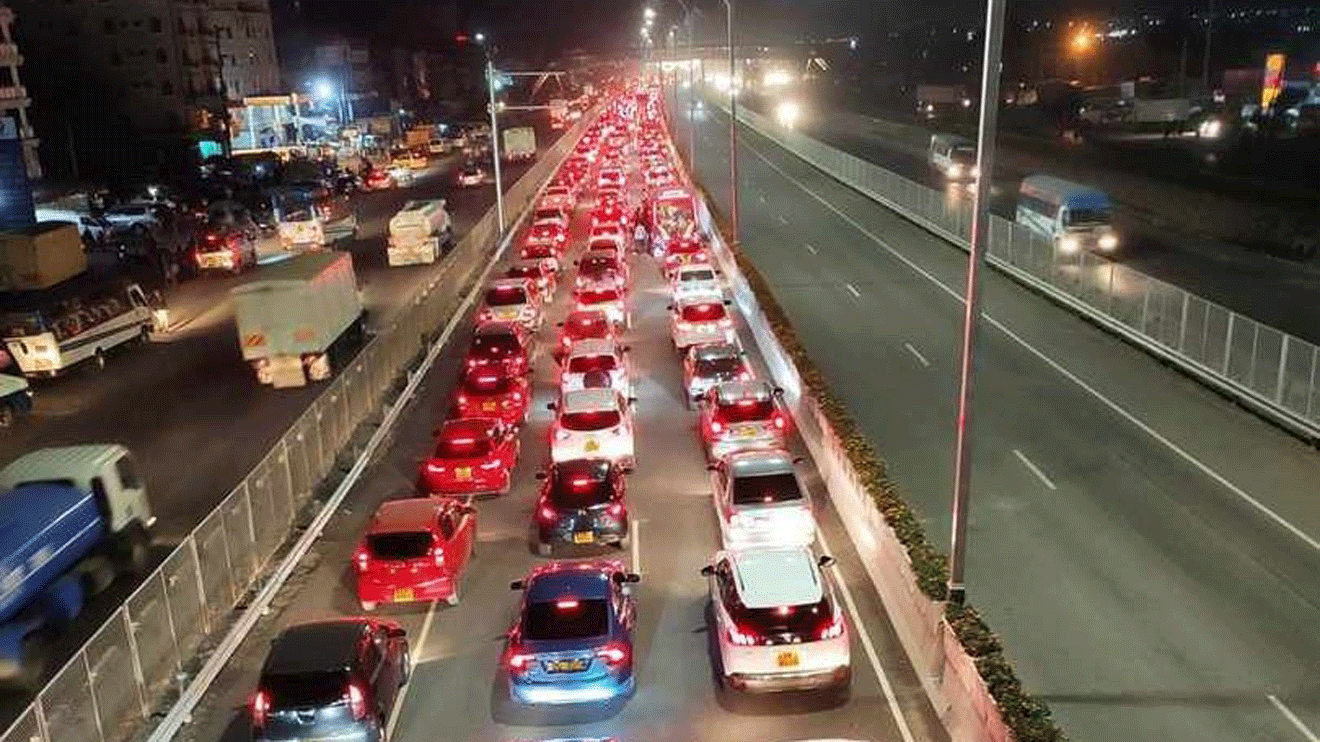The launch of the Nairobi Expressway on July 31, 2022, was a major victory for motorists who had waited long enough for an alternative route to escape the traffic jams along the Uhuru Highway.
However, the opening of the expressway was a blow to hundreds of hawkers who had made the highway their livelihood, selling goods and food to motorists stuck in traffic.
Mary Njoroge says she used to sell perishable food items such as peas (minji) in the evening, targeting motorists who were on their way home and did not have time to enter the Central Business District (CBD) to buy such items.
Her business did well and she says that before the Nairobi Expressway, paying her bills was never a problem.
“Nilikua naingia kwa barabara kuanzia saa kumi jioni na kuanza kuuza hadi saa tatu usiku. Kazi ilikua mzuri juu nilikua narudi kwa nyumba na pesa mzuri (I used to go to the highway at 4pm and could sell my goods until 9pm. The job was good and I would go back to my house with a good amount of money),” said Ms Njoroge.
The same story is told by John, who has been hawking along the Uhuru Highway for almost five years.
According to John, they could start selling their wares from the Nyayo roundabout and walk all the way to Chiromo area and business was good.
“Magari yalikua yanasonga polepole sana sana na ulikua unauza maji, biscuits, na matunda haraka sana. Wakati huo kazi ilikua kwa hii barabara lakini saa hii imeenda chini sana,” said John.
Due to the smooth flow of vehicles along the Uhuru Highway following the opening of the Nairobi Expressway, with the majority of motorists opting for the fastest route, some of the vendors have been forced to relocate to other roads in the city where traffic is congested, such as Ngong Road and Jogoo Road.
Some have also moved to the CBD to sell their wares on the sidewalks and pavements as others have moved out of the city.
“We even used to sell items such as car cloths and windscreen wipers here, but my colleagues moved to other areas as business declined here.”
When the Cabinet Secretary for Transport, Mr Kipchumba Murkomen, appeared before the National Assembly last year, he said that more motorists linking James Gichuru Road to Mombasa Road were opting to use the expressway.
He said the number of motorists using the expressway had increased and the trend was expected to continue, meaning hawkers would be hit harder.
“The total number of recorded vehicles that used the expressway from its inception to the end of March 2023 was 12,491,403,” Murkomen said when he appeared before MPs.
In May 2022, the government gazetted the price that motorists will pay to use the expressway and also listed people and machines that will not be allowed on the expressway.
Hawkers and pushcart operators were among those banned from the expressway, which came as a blow to them.
According to Nairobi County, there are 700 registered street vendors who have been recorded by the county.
However, the county also says that the number could double as there are several unregistered hawkers who are hampering Governor Johnson Sakaja’s plan to relocate them to the backstreets.
The county says there are now more hawkers from neighbouring counties who come to Nairobi daily to sell their wares, as well as others from neighbouring countries such as Burundi, Uganda, Tanzania and the Democratic Republic of Congo.
This has become a challenge to Governor Sakaja’s plan to relocate hawkers from the CBD, and the delay has also led to vandalism of some of the shade structures that the county had spent millions on.



